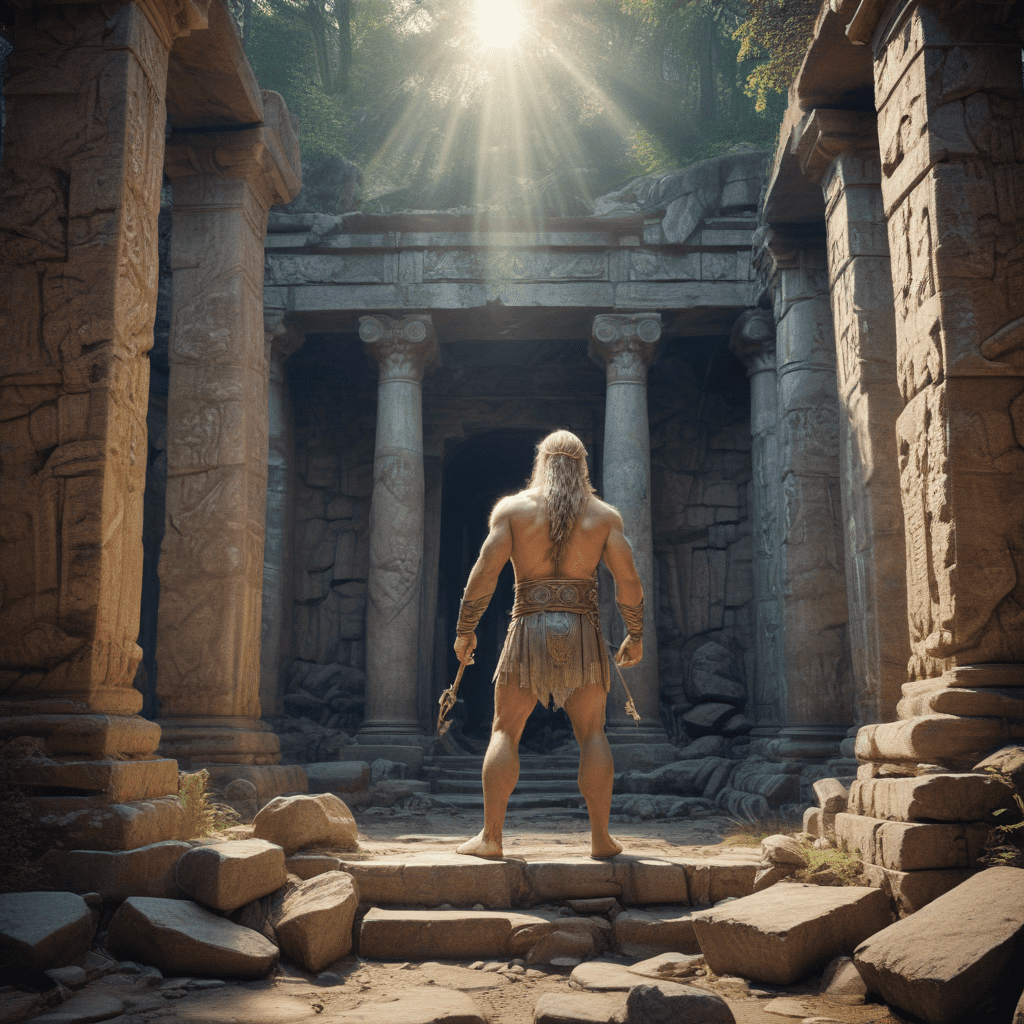Finnish Mythology: Legends of the Ancient Ruins
I. Introduction
Finnish mythology, steeped in the deep-rooted connection to nature, weaves a rich tapestry of legends and lore around ancient ruins, considered portals to the realms of the supernatural. These ruins, scattered across the Finnish landscape, bear witness to the country's enigmatic past and the enduring beliefs of its people.
II. The Ruins of Häme Castle
The crumbling remains of Häme Castle, an evocative medieval fortress, stand as a testament to bygone eras. Its thick stone walls and towering keep evoke tales of King Erkki, a restless spirit said to haunt the halls, seeking retribution for his untimely demise. Locals whisper of eerie apparitions and unexplainable occurrences within the castle's enigmatic confines.
III. The Megaliths of Ristinummi
Nestled amidst the serene Finnish countryside, the megaliths of Ristinummi stand as enigmatic remnants of a forgotten past. These colossal stones, arranged in intriguing formations, have sparked legends and myths throughout the ages. Some believe they possess mystical powers, granting wishes or offering protection, while others speculate about their astronomical significance.
IV. The Hillfort of Sammallahdenmäki
The imposing hillfort of Sammallahdenmäki, an ancient stronghold that once sheltered warriors, is rumored to conceal a cursed treasure. According to legend, a ruthless chieftain hid his plunder within the ruins, a fortune that brings misfortune to anyone who dares to seek it. The whispers of restless spirits guarding the hidden wealth add to the site's eerie allure.
V. The Viking Graves of Björkö
On the windswept island of Björkö, the Viking graves bear silent witness to the fierce warriors of the past. Among the excavated remains, the legend of a female warrior, fallen in battle, lingers. Her spirit is said to haunt the burial site, a testament to the bravery and fortitude of Viking women.
VI. The Cave of Karhua
Hidden within the remote forests of Finland, the Cave of Karhua has served as a shelter for ancient humans and a sanctuary for spiritual practices. Legends recount the tale of a wise shaman who summoned the spirits within the cave, seeking guidance and protection for his people. Some believe the cave still holds the imprint of the shaman's presence, a palpable energy that lingers in the enigmatic depths.
VII. The Iron Age Dwelling of Pyhäjärvi
The Iron Age Dwelling of Pyhäjärvi provides a glimpse into the everyday lives of its ancient inhabitants. Archaeological excavations have revealed preserved wooden structures, offering insights into their homes, tools, and way of life. A poignant legend tells of a family curse that befell the dwellers, a somber reminder of the cyclical nature of fortune and misfortune.
VIII. The Sami Stone Huts of Lapland
Dotted across the vast wilderness of Lapland, the Sami Stone Huts stand as testament to the nomadic lifestyle of the indigenous Sami people. These traditional dwellings, built of stacked stones, were temporary shelters used during seasonal migrations. According to Sami beliefs, protective spirits reside within these huts, offering solace and guidance to travelers in the unforgiving wilderness.
IX. The Medieval Church of Nousiainen
The Medieval Church of Nousiainen, a stunning architectural gem, has witnessed centuries of Finnish history within its hallowed halls. Beneath the church's grand altar, legend whispers of a hidden treasure cursed by a vengeful priest. Some claim to have heard faint whispers and eerie echoes within the church, attributed to the restless spirits guarding the concealed wealth.
X. Conclusion
These ancient ruins scattered throughout Finland are more than just relics of the past; they are living repositories of stories, legends, and beliefs that have shaped the Finnish psyche. From the haunting presence of spectral kings to the protective spirits dwelling within stone huts, these ruins serve as portals to a realm where the supernatural and the tangible intertwine. Their endurance is a testament to the enduring power of storytelling and the deep-rooted connection between the Finnish people and their natural and mythical landscapes.
Frequently Asked Questions (FAQs)
What is the significance of ancient ruins in Finnish mythology?
Ancient ruins in Finnish mythology are considered portals to the supernatural realm, often associated with spirits, legends, and folklore. These ruins are believed to retain the imprint of past events, providing a tangible link between the present and the mythical world.
Are there any specific rituals or practices associated with ancient ruins in Finnish mythology?
While there are no specific rituals or practices explicitly associated with ancient ruins in Finnish mythology, some legends and folklore suggest that certain actions, such as making offerings or leaving gifts, can appease the spirits residing within the ruins.
How do ancient ruins contribute to the cultural identity of Finland?
Ancient ruins are an integral part of Finnish cultural identity, representing the country's rich history and deep connection to nature. These ruins are often incorporated into local folklore, legends, and storytelling, shaping the collective memory and sense of place among the Finnish people.
Are there any modern-day beliefs or practices related to ancient ruins in Finland?
While ancient ruins in Finland are primarily associated with myths and legends, some modern-day beliefs and practices draw inspiration from these traditions. For example, certain ruins may be considered sacred or imbued with spiritual significance, attracting visitors who seek connection to the past and the supernatural.




